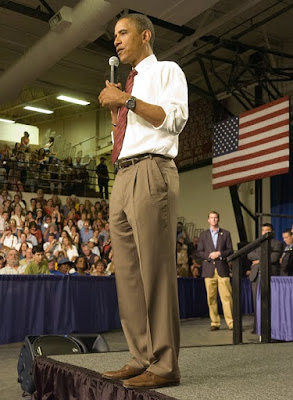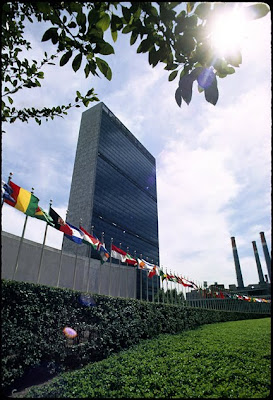This is a continuation of my “Fall of 69” project.
 Today, President Barack Obama will be attending the opening of the General Assembly of the United Nations in New York City representing the flag of the United States. It's a long way from the campaign trail when he spoke of peace at Rio Grande High School last year.
Today, President Barack Obama will be attending the opening of the General Assembly of the United Nations in New York City representing the flag of the United States. It's a long way from the campaign trail when he spoke of peace at Rio Grande High School last year.
It is his first visit as president.
There are a number of people who don’t see a benefit for the UN. In this country, protesting in favor or against is protected.
 Others, myself included, believe there is a benefit, even if it only that the world’s nations sit in the same room acknowledging each other’s existence and listening to what they have to say.
Others, myself included, believe there is a benefit, even if it only that the world’s nations sit in the same room acknowledging each other’s existence and listening to what they have to say.
So what’s wrong with this picture?
 Forty years ago, President Richard Nixon made his first visit to the General Assembly where he and his wife, First Lady Pat, were greeted by the third UN Secretary General U-Thant of Burma.
Forty years ago, President Richard Nixon made his first visit to the General Assembly where he and his wife, First Lady Pat, were greeted by the third UN Secretary General U-Thant of Burma.
It’s easy to think that the world has changed a lot. Maybe it has, maybe not.
 This statue, “beating swords into plowshares” and a replica of the first satellite Sputnik, in the lobby of the General Assembly, were gifts of the Soviet Union.
This statue, “beating swords into plowshares” and a replica of the first satellite Sputnik, in the lobby of the General Assembly, were gifts of the Soviet Union.
The country no longer exists. The “Cold War” is over, but there’s still a chill in the air. Wars and revolutions simply move around various parts of the globe.
U-Thant's homeland, the Union of Myamar, as it is now known, is governed by a military junta since 1962. Colonial nations, not willing to recognize the junta, still refer to the country as Burma.
 The names and flags of some of the nations have changed. Forty years ago there were a lot of communist countries now there are only four: China, North Korea, Vietnam, and Cuba. China was not even a member, Taiwan was. Taiwan, under the name the Republic of China, is an island state that broke away from the communist mainland, the Peoples Republic of China, when Mao Zedong lead a civil war after World War II.
The names and flags of some of the nations have changed. Forty years ago there were a lot of communist countries now there are only four: China, North Korea, Vietnam, and Cuba. China was not even a member, Taiwan was. Taiwan, under the name the Republic of China, is an island state that broke away from the communist mainland, the Peoples Republic of China, when Mao Zedong lead a civil war after World War II.
 Then, the war in Indochina ragged. The Ambassador of Cambodia, under Prince Sihanouk, held a press conference accusing U.S. troops of incursions into his country to interdict North Vietnamese troops along the Ho Chi Minh trail. The United States denied it.
Then, the war in Indochina ragged. The Ambassador of Cambodia, under Prince Sihanouk, held a press conference accusing U.S. troops of incursions into his country to interdict North Vietnamese troops along the Ho Chi Minh trail. The United States denied it.
The U.S. had secretly entered and bombed Cambodia. Ho Chi Minh died in September 1969 and then Prince Norodom Sihanouk was deposed in 1970.
Nothing from that press conference was reported in this country's media for two years, when CBS' 60 Minutes ran a clip.
However, a year later, 1970, Nixon ordered bombing raids and ground attacks into Cambodia, setting off major protests in this country leading to the shooting deaths of four students at Ohio's Kent State University by National Guard troops.
Now the U.S. and its allies, fight in two countries: Iraq and Afghanistan, and make regular incursions into a third country, Pakistan; their ambassador doesn't complain.
Nixon had promised peace, yet it took him more than four years to extricate our country from Southeast Asia.
With reports from Lt. Gen. Stanley A. McChrystal, top commander in Afghanistan, of needed troop increases, Obama faces a similar dilemma.
Maybe some things do change, but to what extent?
No comments:
Post a Comment